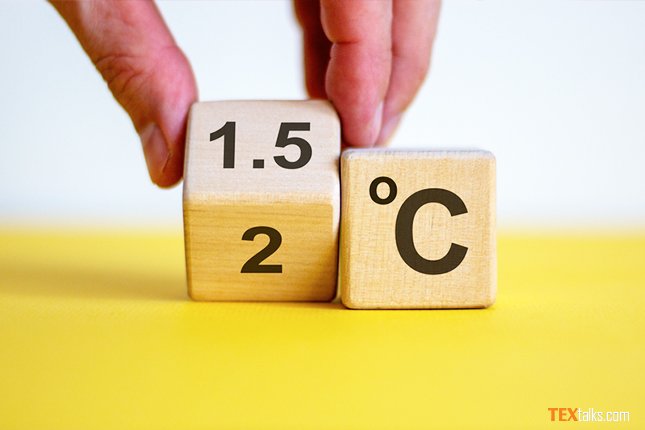The Paris Agreement is the first-ever universal, legally binding global climate change agreement, adopted at the Paris climate conference (COP21) in December 2015. The Paris Agreement sets out a global framework to avoid dangerous climate change by limiting global warming to well below 2°C and pursuing efforts to limit it to 1.5°C. The industries, especially textiles, are a significant source of pollution, and after this Agreement, the sector shows huge sustainability improvements to abide by the Paris Agreement.
The Agreement includes commitments from all major emitting countries to cut their climate-altering pollution and to strengthen those commitments over time. The Agreement stated that it would enter into force (and thus become fully effective) only if 55 countries that produce at least 55% of the world’s greenhouse gas emissions (according to a list made in 2015) ratify, accept, approve or accede to the Agreement. 175 Parties (174 states and the European Union) signed the Agreement on the first date it was open for signature.
As of November 2020, 194 states and the European Union have signed the Agreement. 188 states and the EU, representing about 79% of global greenhouse gas emissions, have ratified or acceded to the Agreement, including China and India, the countries with the 1st and 3rd largest CO2 emissions among UNFCC members.
Pakistan also signed the Paris agreement on 22 April 2016 with the ambition of 0.43% of greenhouse gas for ratification. The United States, under the leader of Donald Trump, withdrawn from this Agreement on 4 November 2020 with 17.89% greenhouse gas ratification. Apart from the United States, Turkey, Iran, Yemen, Libya, South Sudan, Iraq, and Eritrea have also withdrawn from this Agreement. Now, Fashion brands including Nike, Levi Strauss (LS&Co), Gap, Target, and the VF Corp-owned Timberland, Vans, and North Face are amongst more than 1,000 signatories of a statement incoming Biden administration, reaffirming their commitment to the goals of the Paris Climate Agreement.
In 2020, an unprecedented peacetime drop in global greenhouse gas emissions due to the economic downturn driven by the COVID-19 pandemic was observed. But similar annual cuts in emissions are needed every year this decade, and as economies recover, emissions are expected to bounce back strongly in the coming years. The Fashion Industry Charter for Climate Action lays out a pathway for all companies within the fashion and apparel value chain, from raw material production to retail and distribution, goes beyond previous industry-wide commitments, and is aligned with the Paris goals Agreement. It sets the vision to achieve net-zero emissions by 2050, including a midway target of 30 percent GHG emission reductions by 2030 and a commitment to establish a decarbonization pathway for the fashion industry, drawing on methodologies from the Science-Based Targets Initiative.
China has pledged to reach carbon neutrality by 2060, and Japan, South Korea, South Africa, and Canada also have set their sights on net-zero by 2050. Other commitments include the EU’s landmark net-zero goal, President Joe Biden’s promise to put the U.S. on a net-zero footing by 2050, and 63 percent of the global greenhouse gas emissions are emitted in territories soon to be governed by some form of net-zero commitment.
The global fashion sector is currently generating more emissions each year than the UK, Germany, and France combined and will fail to align with the Paris Agreement without transformational change over the next decade. The solution is if companies across the value chain must join up and accelerate efforts to bring textiles recycling infrastructure and systems to scale. The Ellen MacArthur Foundation estimates that less than 1% of clothing produced annually is recycled into new garments. 73%, in contrast, is landfilled or burned.
The fashion industry pitched in with its bit-a group of 86 fashion companies called on political leaders to help deliver ambitious and effective climate action by forming the Fashion Industry Charter for Climate Action (FICCA). The FICCA exceeded previous industry-wide commitments and nailed a target of 30 percent GHG emission reductions by 2030.
Sustainability has gained a lot of traction in the textile industry over the last few years. Purchase decisions are no longer only made based on fashion and comfort. Consumers are increasingly demanding more eco-friendly textiles. This behavior and awareness have significantly reduced the greenhouse gas emission as recycled or sustainable materials are being preferred giving Paris Agreement a boost.
Therefore, it is hoped that the Paris Pact Signatories will make extra efforts to promote sustainability and reach the desired goals by the set targets. For the said purpose, textile companies have to play their part regarding selecting sustainable raw materials, modifications of processes, and reducing GHG emissions.



